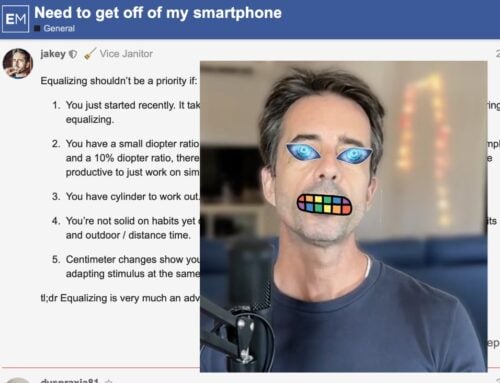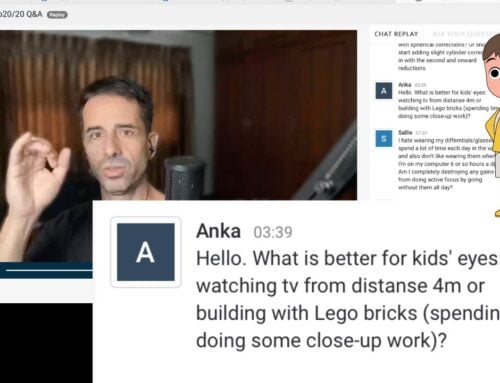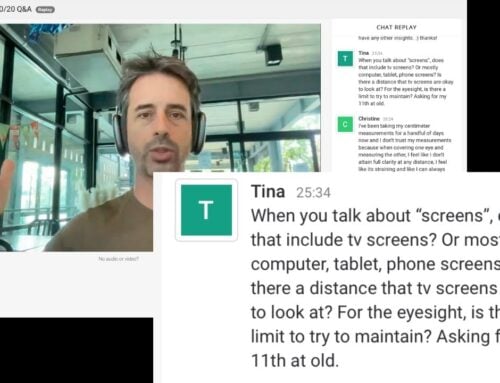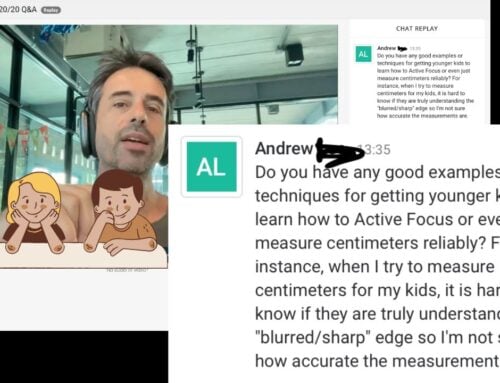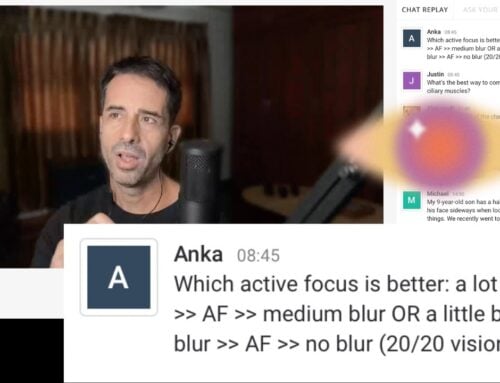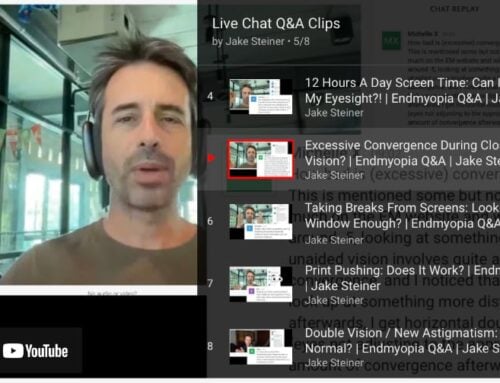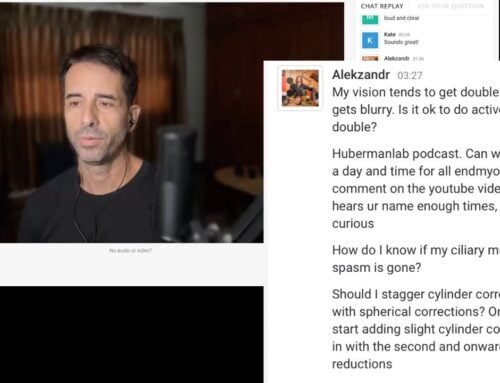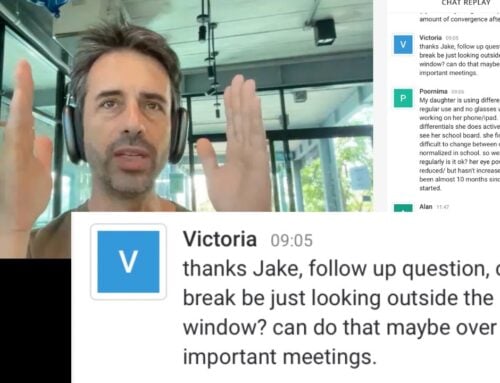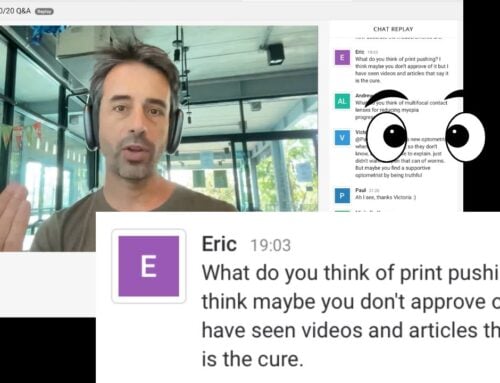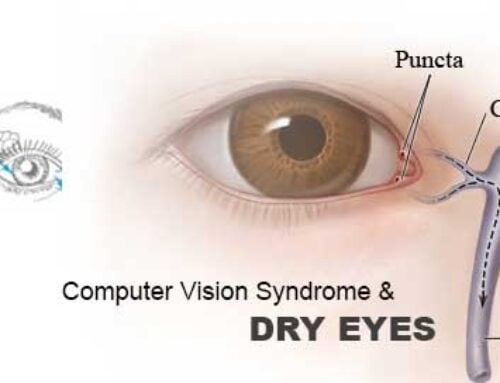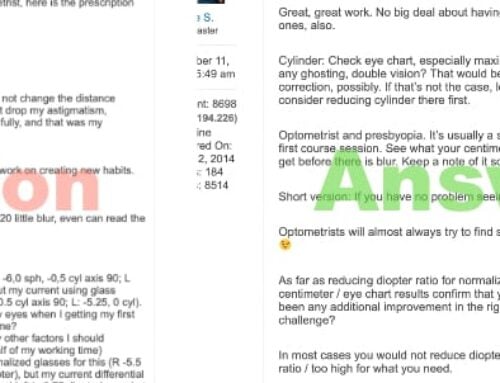The forum, I keep saying, is gold.
Whenever I feel a moment of inspiration, it’s usually answering a very specific question in the forum. I read something, and it reminds me of a previous experience, or something we sorted out with a student in the past. Along with that, great ideas, perspectives, and experiences are written up in the forum by students. If this resource existed back when I was just getting started trying to get off my -5.00, I’d have bought access to a forum like this, in a heartbeat.
In a heartbeat. Not even a sales pitch.
Let’s get into some of the forum Q&A from today. Starting out, active focus vs. double vision clearing. Two different things, a nuance that’s absolutely key to improving your eyesight successfully.
Question 1: Double Vision Images Won’t Clear Up?
Angela asks:
I’ve been frustrated with this exercise for a while as I didn’t seem to be able to get it. But the past couple of times the text has cleared up for me – not to the point of being perfectly sharp – but sharpish with a bit of offset text, so doubled up text. While I’m looking at the text, I can see it moving ever so slightly – left, right, up, down and becoming more black… is this my brain trying to sort out the double vision?
And clarifies, based on my follow-up question:
By frustrated I mean, I thought the text would suddenly appear crystal clear, but the double vision stays. Maybe it’s a matter of practice?
Then Steve jumps in with some solid observations:
Hi Angela,
I know the frustration of double vision very well! It used to drive me insane once I figured out active focus 2 years ago or so. Double vision is still there, but I have found a nice way to forget about it and clear it up by thinking about other things by daydreaming.
Yes, I said it…daydreaming while trying to fuse double/multiple images. It’s similar to what I learned when doing the peripheral awareness exercise when I first started out. De-focusing your vision and just take in the entire image without looking at anything in particular. When I started doing this, I found that I began to daydream quite often. During this process I noticed afterwards, my vision would clear up nicely for a few seconds to a few minutes.
So now I make an effort to NOT think about the double vision and just think about other tasks, like what should I have for lunch/dinner today? or what should I do this weekend? etc, etc.
Sure enough, things clear up within 30 seconds to a minute and it is pretty satisfying. Devoting brainpower to planning and thinking seems to allow the visual cortex to focus on its job of, you got it…focusing and fusing the multiple images! There is probably a much more scientific way to explain it with the release of certain chemicals in the brain and such, but i’m not exactly a neuroscientist. Maybe in my next career, LOL.
And I add a few thoughts, for good measure:
Very nice, Steve!
It’s definitely quite different from active focus. Active focus is effort. Blink, will your eyes to clear up the text. It’s an activity for “in your eyes”. Clearing double vision on the other hand happens in the visual cortex, and requires relaxed patience. No willful clearing anything, just gazing at (ideally) larger and smaller fonts at some distance, and observing how your brain (“in front of your eyes”) tries to assemble the image. It’s a bit trippy and should be a passive and enjoyable experience.
You’ll get active focus first, be able to clear blur. Once you have that extended range of “active” clarity, you’ll start noticing double vision images. Your eyes adjust, and then your brain needs to catch up. That’s why the program is structured to first reduce prescriptions to blur horizon, then introduce active focus, and later start dealing with the double vision.
As the double vision lessons / clears faster, you know you’re close to being able to reduce the diopters again.
The whole think is an experience that’s difficult to precisely put in words that will mean the same thing to everyone. Steve’s contribution is great, just like the many active focus experiences, you have to hear it in various different ways till you find something that resonates and you can replicate.
Fortunately most everything else in the program is tangible and easily quantified. ?
(original thread)
See what I mean, about forum gold?
You got a structured approach with BackTo20/20, and then a community (and Jake) to help you tweak the details.
Also, it all starts with 1) lenses that give you a blur horizon, 2) finding the active focus experience, 3) starting to get centimeter improvement, 4) discovering double vision range, 5) clearing double vision, and 6) reducing diopters. Then the whole process repeats.
You can find lesser, “easier” approaches. Some things work, others less so. I’m all for science, and disproving things, and improving things. I like eliminating redundancies and getting to the core of what works. Above, is as simple as I’ve managed to get it, without starting to take out key elements.
Question 2: Do I Have To Start With 20 Minutes No Glasses?
Next. Andrew asks:
I just started the program. Is the 20 minutes without glasses for just the first morning or every morning from now on?
Remember, everything is part of the bigger plan. I’m never making you do things, without there being a point, a lead-in to something else. Here’s how I try to explain this to Andrew:
Andrew,
You don’t strictly have to do it, if there’s a reason you don’t want to. (Is there?)
The idea is to start separating your mental process from the glasses a bit. Instead of waking up and going straight to lenses, you want to have a bit of time for you to consciously be aware of blur, and less consciously your whole vision system to be introduced to blur vs. clear vision.
For most starting out, glasses are like a prosthetic. Put it on, forget about it. It needs to become less of that, and more of a crutch, and aide towards clear vision. A bit of a starting activity, some appreciation for what the lenses can do, and the first bit of “active” eyesight vs. the passive eyesight you’ve been accustomed to.
(original thread)
Paradigm shift. Lenses as a replacement for healthy vision, lenses because your eyes are “broken”, vs. lenses as a temporary aide, something you want to distance yourself from, progressively, getting off the drugs, back to healthy, natural you. That’s why I want you to have that possibly a little disconcerting experience of starting your day without glasses. It’s like withdrawal for some. Others feel like they can’t be without their “fix” for that focal plane drug.
They got you, with that first diopter, that you don’t really need. And now you’re hooked, and even taking them off for 20 minutes might make you feel all weary.
Tell me how glasses aren’t like drugs. ;)
Question 3: What Glasses For Computer Use?
And lastly, the very common question for a first computer / close-up / differential lens choice. Pam asks this one, and I’ll just post my answer here. Pam has 0.75 diopters of astigmatism (cylinder) correction, and a pair of older glasses, a diopter lower than her current prescription, but she still sees more than 90cm with those (too strong for close-up!). Here are my comments:
Hi Pam!
How far is the computer comfortably, for your close-up?
In many cases sub 1 diopter cylinder correction isn’t necessary for close-up. Because of that we start “weaning off” the astigmatism correction close-up first, and then later do the same for your distance glasses. It’s the least invasive way to do it, and tends to work very nicely. Beside that though you’re absolutely correct, we want to generally keep the same relative focal plane throughout.
The rule for cylinder correction replacement is substituting 0.25 spherical for every 0.5 of cylinder.
Also generally, about 1.5 diopters below a 20/20 distance prescription will do it for most, for a fist suitable differential. Depends a bit in each case on lighting, accommodation range, screen distance, activity (you need shorter distance for some demanding, non-text based tasks). The extra half diopter lower will likely be a good start for you as well!
(original thread)
I’d like to have the program be 100% hands-off. I could just wander off and any myope could do it, no support required.
I don’t think that’s possible, after years of trying to get there. Your eyes aren’t the same as mine, our biology is different, even the way we think when we read words and instruction is different, and also a lot of people just want to know there’s somebody there to help them.
That’s why I hope to be able to give this approach to supportive optometrists, and create a new, better, vision healthy business differentiator for them. Imagine having all the benefits of the program, but also being able to test your eyes with a bunch of nice gear, and get the right lenses right there, no hassles, no waiting, right at a place near your home.
At least that’s the dream. For now we’ve got this, the next best thing. If you’re about tired of having been turned into a lens consumer, and you’re missing your own, natural eyesight, enjoy some quality @endmyopia time! ;)
Cheers,
-Jake




